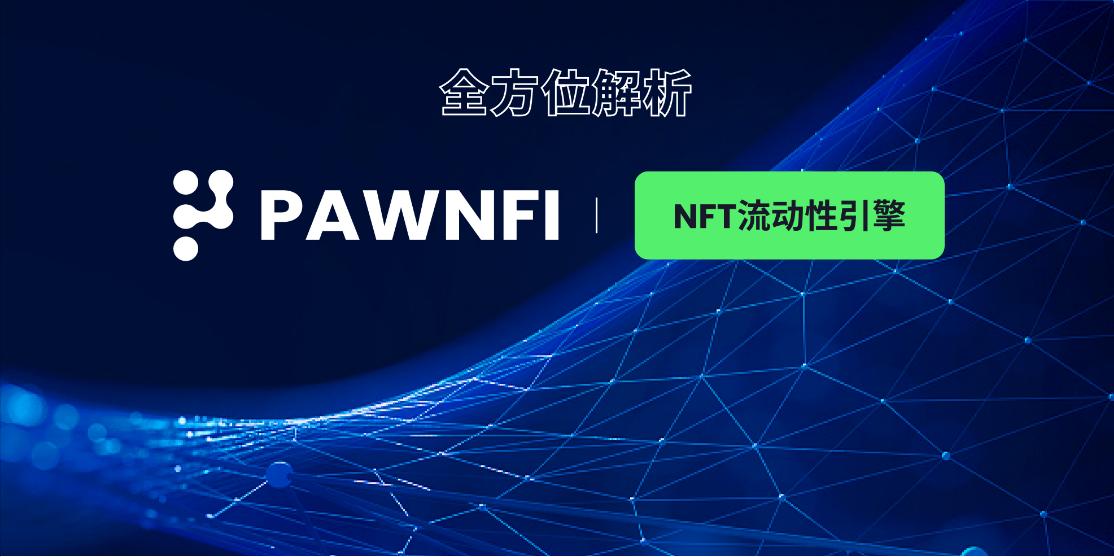Overview of the Blend White Paper: How to Unlock Liquidity for NFTs through Lending?
Source: JamesX
1. Overview
This article introduces Blend: a peer-to-peer perpetual lending protocol that supports any collateral, including NFTs. It does not rely on oracles and has no loan settlement date, allowing borrowing positions to remain open indefinitely until liquidation occurs, with interest rates determined by the market.
Blend uses a complex off-chain quoting protocol to match users who want to borrow against their NFT collateral with any lenders willing to offer the most competitive rates.
By default, Blend loans have fixed interest rates and never expire. Borrowers can repay at any time, while lenders can exit their lending positions by triggering a Dutch auction to find new lenders at new rates.
If the auction fails, the borrower will be liquidated, and the lender will take possession of the collateral.
Blend has been developed by core contributors of Blur. In their implementation, some protocol parameters, such as protocol fees, are controlled by the governance mechanism of the BLUR token DAO, which is discussed in more detail below.
2. Motivation
There have already been numerous platforms supporting NFT lending. Popular models include perp-like protocols (such as Floor Perps and papr), pool lending protocols (such as BendDAO and Astaria), and peer-to-peer protocols (such as NFTfi and Backed).
5/ Blend is most similar to the peer-to-peer model but has some important differences to improve the borrower experience. We do not delve into the details of all NFT-supported lending protocols but analyze some commonly applied design mechanisms and how Blend differs from them.
A. No Oracle Requirement
Some of these protocols require a quoting oracle to determine when positions should be liquidated or to set interest rates. However, the price of a single NFT is difficult to measure objectively. Even floor prices are often hard to measure on-chain. Solutions often involve a trusted third party or may be subject to manipulation by trading strategies.
Blend avoids reliance on any oracle in its core protocol. Interest rates and loan-to-value ratios are determined by the terms lenders are willing to offer. Liquidation is triggered by the failure of a Dutch auction.
B. No Expiration Date
Some protocols only support debt positions with specific expiration dates. This is inconvenient for borrowers, who need to remember to close or roll over their positions before expiration (or risk severe penalties such as losing their NFTs). The manual process of rolling over positions also incurs gas fees, which cuts into lending profits.
As long as there are lenders willing to lend against collateral, Blend will automatically roll over the next borrowing position. On-chain transactions are only required when interest rates change or one party wants to exit the position.
C. Liquidation
Some protocols do not support liquidation before expiration. This is convenient for borrowers and reasonable for many use cases. However, since it effectively gives borrowers a put option, lenders require shorter expiration times, higher interest rates, or lower loan-to-value ratios to compensate for the risk of position bankruptcy.
However, in Blend, as long as the lender triggers a refinancing auction and no one is willing to take over the debt at any interest rate, the NFT may be liquidated.
D. Peer-to-Peer
Some protocols pool lenders' funds and attempt to manage risk for them. This often means relying heavily on on-chain governance or centralized administrators to set parameters. It also makes it difficult to unconditionally support long-tail assets as collateral.
Blend adopts a peer-to-peer model where each loan is matched individually. Blend does not optimize for the ease of use for lenders but assumes the existence of more rational lenders who can participate in complex on-chain and off-chain protocols, assess risks, and use their own capital.
3. Mechanism Design
In this section, we build the platform protocol step by step, starting with a simple peer-to-peer fixed-rate lending protocol and gradually adding adaptability to allow for low gas fees for effective rolling and market discovery of floating rates.
A. Fixed-Term Lending
First, let’s imagine how our protocol would work if it had loans with expiration rather than being perpetual.
We start with the lender. The lender signs an off-chain quote to lend a certain principal amount of ETH at a specific interest rate and expiration time, using any specified series of NFTs as collateral. They make it public (for example, by posting it to an off-chain quoting repository).
The borrower has an NFT they want to borrow against. They browse available off-chain quotes and select a suitable quote that meets their desired terms. They then create an on-chain transaction to fulfill the lender's proposal, placing their NFT in a collateralized vault and transferring the principal from the lender to themselves.
Before the expiration time, the borrower can pay the lender the repayment amount (calculated as the loan amount plus interest), which closes their position and allows them to withdraw the collateral. After expiration, if the loan has not been repaid, the lender can reclaim the collateral.
Note: If the value of the NFT has fallen below the repayment amount, the borrower may choose not to repay the loan.
B. Refinancing Auction Mechanism
In the above mechanism, if the borrower forgets to repay the loan before expiration, they will lose their NFT, even if the NFT's value is far above the repayment amount. This seems harsh.
In many cases, others may be willing to pay the lender the full repayment amount to take over the loan until a later expiration time, even if it comes with a higher interest rate.

Thus, the protocol can adopt a Dutch auction for interest rates, rather than simply handing the collateral over to the lender, but instead conducting a competitive auction process to extend the loan.
At expiration, if the borrower has not repaid the debt, a refinancing auction begins at 0% interest and steadily rises.
Once the auction reaches a rate at which a new lender is interested in lending, the new lender can accept it by submitting their quote on-chain. The new lender pays the old lender the full repayment amount, starting from the moment the auction is completed, and takes over the loan until the new expiration time (which can be calculated as the current expiration time plus some protocol-specified loan term), using the rate determined by the auction.
C. Liquidation
This Dutch auction may fail to find willing lenders, especially if the value of the collateral has fallen close to or below the value of the debt.

Once the auction reaches a defined maximum interest rate (e.g., 1000%) without any new lenders intervening, the protocol infers that the position has gone bankrupt or is otherwise unenforceable, and the borrower is liquidated. The existing lender can then send a transaction to take ownership of the collateral.
D. Optimistic (Status Quo) Auction Trigger Mechanism
In some cases, the same lender may be willing to continue providing the same loan under the same terms, and the borrower may feel the same. We can even consider this the default case. In such situations, conducting an auction would be wasteful.
Instead, we can design our protocol to optimistically renew the loan. At each expiration time, the borrower and lender, by default, will extend the expiration time by a predetermined loan term, under the same terms. The above auction will only occur when the lender seeks to terminate the loan.
E. Continuous Loans
One issue with the above protocol is that during the loan period, if the price of the collateral dangerously drops close to the repayment amount, there is no way to liquidate it before expiration.
If the loan term is short, this is not an issue, as if the lender is concerned about the safety of the collateral, they can trigger a refinancing auction at the next expiration.

We can imagine shortening the loan term to an infinitesimal amount. If at any time the lender feels concerned about the safety of the collateral, they can trigger a refinancing auction.
This allows us to abandon the concepts of expiration time and loan term. By default, loans continue indefinitely until a user interacts with the contract. Interest continuously accumulates, and the repayment amount is calculated whenever needed.
Borrowers can repay at any time. If borrowers want to change the amount they borrowed or obtain a better rate, they can atomically take out a new loan against the collateral and use the new principal to repay the old loan.
If lenders want to exit the loan, they can trigger a refinancing auction as described above. All timelines and deadlines in the refinancing event can be defined relative to the time the refinancing is initiated.
Additionally, if there is a compatible quote from another lender, the current lender can skip the auction by submitting the quote from the other lender to the treasury to exit their loan position.
4. Governance Considerations
The protocol does not rely on governance for collateral valuation or setting acceptable loan-to-value ratios, thereby reducing the need for extensive on-chain governance or centralized management. However, in certain cases, adjustments to some parameters can enhance the protocol's functionality. These parameters include:
Fees: Fees collected from borrowers and lenders by the protocol.
Maximum Interest Rate: The maximum interest rate that must be reached in loan auctions before liquidation occurs.
Auction Formula: The equation governing the quoted interest rate of loans as the auction progresses.
In the implementation of Blend by Blur, these parameters can be managed by the governance process of the BLUR token DAO after a 180-day waiting period to ensure optimal performance and adapt to changing market conditions in a decentralized manner.
5. Conclusion
Blend is a flexible, permissionless floating-rate lending protocol that can support any collateral, has no reliance on oracles, and allows the market to bear any interest rates and loan-to-value ratios.
This concludes the translation of the white paper content for Blend, the newly launched P2P NFT perpetual lending platform by Blur.
I will soon provide my personal analysis on 1. the content of the white paper 2. the rationality of the mechanism 3. and its market positioning.










